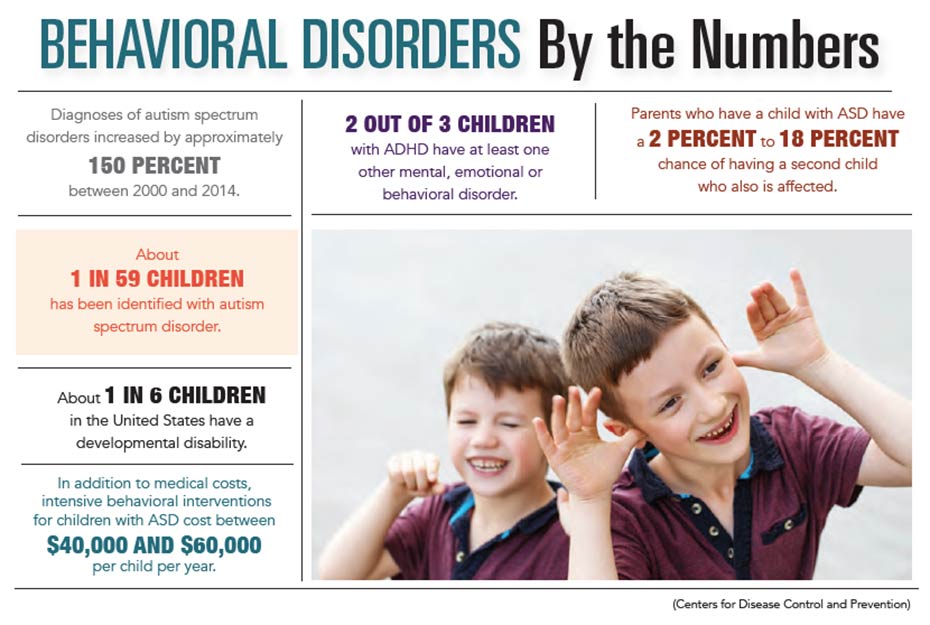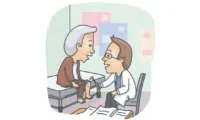Behavioral and developmental disorders have become more common in recent years. While the jury is still out on whether those numbers can be attributed to better diagnoses or a toxic environment – or perhaps a combination of both – understanding these disorders is the first step toward helping those affected by them to live as normal a life as possible.The umbrella of behavioral and developmental disorders is wide, covering long-term disabilities that involve thinking, perception, mood and behavior. These include disabilities formed in utero, like fetal alcohol syndrome, spina bifida, mental retardation and others such as attention-deficit/hyperactivity disorder (ADHD), autism and Asperger’s syndrome.
“The spectrum disorders are a complex intersection between a genetic predisposition and environmental triggers,” explained Dr. Allan Lieberman, founder of the Center for Occupational and Environmental Medicine in North Charleston.
Factors like allergies, nutrition issues and toxic agents could exacerbate the disorder.
In addition to the physical aspects of a person’s environment, mentally troubling surroundings could also increase behavioral problems. Adverse childhood experiences – known as ACE – could impact behavior and development. Research is ongoing that epigenetic changes could be passed on to children when a parent suffers from ACE.
Diagnosis begins with parents but is usually also evaluated through development screenings at routine well visits.
Though indicators vary by factors such as age, particular disability and severity, red flags often include not making eye contact, a lack of interest in nonverbal or verbal communication and stereotypy – repetitive behaviors and movements. The disorder can be diagnosed by a medical doctor or a clinical psychologist, but, in South Carolina, a psychological diagnosis is required in order to receive certain medical coverage under the provisions of the Tax Equity and Fiscal Responsibility Act (TEFRA).
Dr. Laurie Dickson-Gillespie, a child and adolescent psychologist with Restorative Psychological Services in Simpsonville, uses a four-legged treatment plan as an analogy for her patients and their families.
“Long-term disabilities require long-term, integrative treatments, and there are many facets: biomedical treatments, electrical treatments like biofeedback and neurofeedback, educational treatments such as speech OT, PT, ABA-therapy and to have the child follow over time with neuropsychological testing. You get a baseline, put a plan together and measure progress over time,” she explained.
While there are links between some behavioral disabilities and biomedical approaches, biomedical treatments are non-evidence-based and are not covered by insurance. It is best to speak with your child’s medical doctor to determine a treatment plan specific to their particular situation.
Social and experiential opportunities for those with behavioral and developmental disabilities can help individuals living with one of these disabilities lead a more normal life – boundless playgrounds and handicapped-accessible play areas increase access for the wheelchair-bound and sensory sensitive, and many YMCAs, county parks and even some national chains like Chuck E. Cheese’s incorporate special events for families of children who require a “sensory sensitive” experience.
Caring for someone suffering from a disability like these can be challenging in many ways, and a web of support groups such as internet chatrooms are available for parents, caregivers and families. Support groups – Children and Adults with Attention-Deficit/Hyperactivity Disorder (CHADD), Parent to Parent, Family Connection of South Carolina, Applied Behavior Analysis (ABA) Support Services, to name a few – offer everything from emotional support to parent advocates for help with schools and 504 plans.
While there is no concrete cure for these disabilities, depending on the level of severity, a proper treatment plan can greatly improve quality of life and a person’s ability to live as normally as possible.
For some of these disabilities, “the cause is a complex combination of factors that can be altered dramatically when treated correctly,” explained Dr. Lieberman. “Physicians with the training to handle these factors can literally reverse many of these conditions.”
Certain levels of behavioral and developmental diseases, he added, are irreversible.
In the end, embodying healthy habits, reading to your children, accepting what you cannot change and improving your child’s environment will help improve their disposition.
Editor’s Note: HealthLinks does not endorse non-evidence-based approaches, but we want to share the information on this viewpoint in an impartial manner.
By Anne Toole








